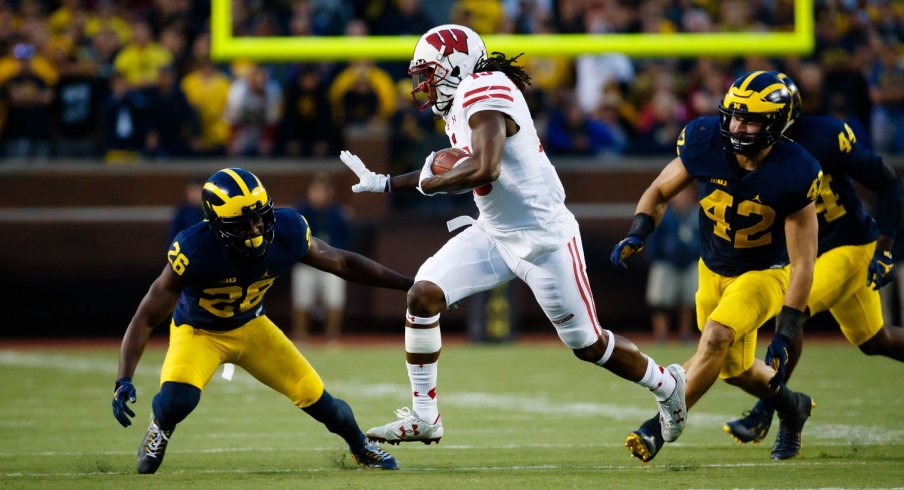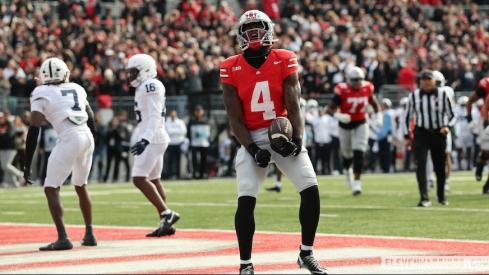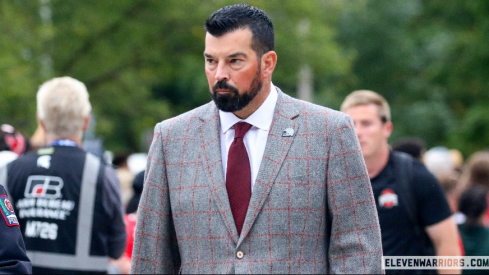Before we get started, please answer this simple question: "In your opinion, which of the following best describes the 2016 Wisconsin Badgers?"
- Boring, pro-style offense reminiscent of Tresselball
- Aggressive and attacking game plans that overwhelm opponents
- Lacking athleticism but well-coached
- A hotbed of NFL talent
Unfortunately, there is no single correct answer, as this year's UW squad is perhaps the biggest Rorschach test in college football. Elements of all four statements above are true, but the degree to which the success of the nation's eighth-ranked team can be attributed to each is up for debate.
The Badgers upset an LSU roster stocked with pro talent in week one and followed it up by handily defeating a Michigan State team that has disappointed many a few weeks later. Their only blemish is a close 14-7 loss to Michigan two weeks ago in which both teams seemed to walk away with more national respect, despite the outcome.
But for those that haven't paid close attention to what's gone on in Madison over the past two seasons, much looks the same as it always has. A talented running back still lines up in the I-formation behind a fullback and a strong physical line that opens hole after hole thanks to zone-blocking schemes.
But although head coach Paul Chryst has resurrected many of the same formations he called while serving as Bret Bielema's offensive coordinator from 2005 to 2011, he's evolved his play-calling to adapt to the modern game. While it may come as a shock to many, Chryst now relies heavily on the same run-pass-options we often associate with wide-open spread attacks.
While spread offenses like the Buckeyes' own are happy to distribute the ball all over the field to stress defenses, the Badgers use RPOs for two reasons:
- Open up the box to run the football
- Give their young quarterback easy throws
Quick, one-decision throws like the bubble screen above make it much easier for freshman signal-caller Alex Hornibrook to get in an early rhythm. After taking over as the starter before the Michigan State game three weeks ago, the young QB's performance has been admirable, yet inconsistent.
Hornibrook has been far more effective early in halves than late, completing less than half his throws in both the second and fourth quarters. However, his most recent performance in Ann Arbor left many questioning his tools to play the position, lacking zip on a number of throws and allowing the athletic Wolverine defenders to make countless plays on the ball in a three-interception afternoon. The Buckeyes will undoubtedly play a great deal of press-man coverage as a result, allowing ballhawks like Malik Hooker and Marshawn Lattimore to look for turnover opportunities of their own.
When the Buckeyes do have the ball, though, the Badgers won't just lie down the way they did in their last meeting. This year's Wisconsin defense features a great deal of talent in the front seven to complement a solid, well-coached secondary that doesn't try to do too much.
New defensive coordinator Justin Wilcox is determined to stuff the run on early downs and force his opponents into uncomfortable third down situations. At that point, his defense can pin their ears back and attack with a myriad of zone-blitzes that bring pressure from anywhere.
Though much of the attention goes to 3-4 outside linebackers Vince Beigel and T.J. Watt, 10 different Badgers have recorded a sack in the young season, showing Wilcox has no preference for where his pressure should originate. Against a young Buckeye offensive line that struggled at times last week against Indiana's pass rush, the Badgers will undoubtedly unveil a slew of new schemes to try and confuse Jamarco Jones, Michael Jordan, and Isaiah Prince.
The easiest way to overcome this obstacle is to avoid it completely, meaning the Buckeyes must attack the edges on early downs, forcing the Badgers' edge players to loosen up and cover the alleys on sweeps and screen passes and relying heavily on Curtis Samuel. The versatile star of the OSU offense was hardly used to his full potential last week, but that has to change if the Buckeyes hope to win on the road. Simply running inside over and over against this Wisconsin team plays directly to their strengths.
Though the Badgers play a great deal of 'Quarters' coverage on early downs, Wilcox will also mix in a fair amount of Cover 3 as well, which is prone to happen if the OSU running game does get going. The extra safety near the box may help contain the likes of Samuel or Dontre Wilson, but will open up the downfield play-action game that has long been the foundation of the Buckeye passing attack, meaning J.T. Barrett will need to leave the previous game behind and play like the Heisman contender he is.
Make no mistake, the Buckeyes will be the far more talented of the two teams at Camp Randall stadium Saturday night, but the Badgers won't make it easy. They've earned a top-10 ranking by forcing opponents to play into their game while leaning on an ability to execute more consistently, a battle they only just barely lost in the Big House two weeks ago.



